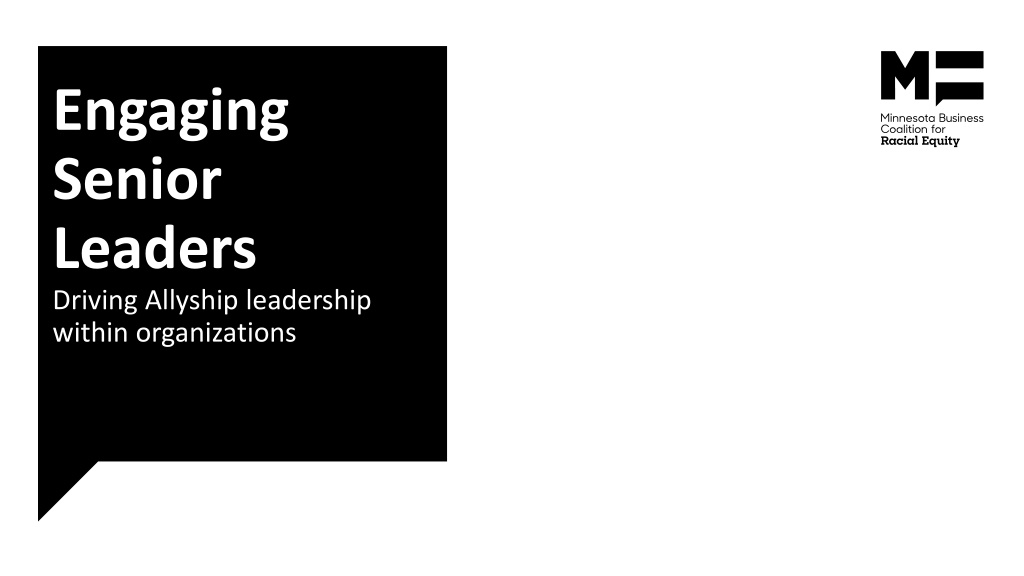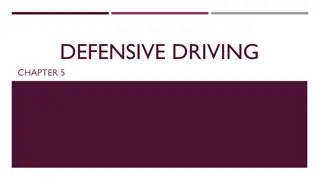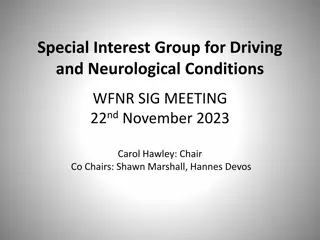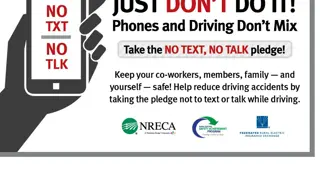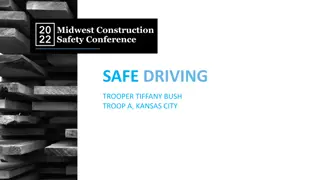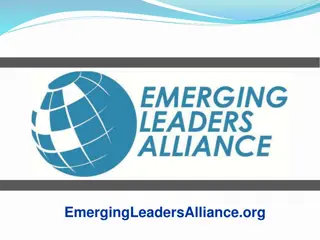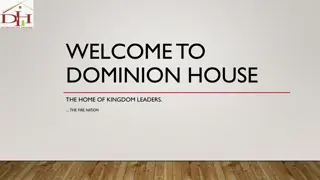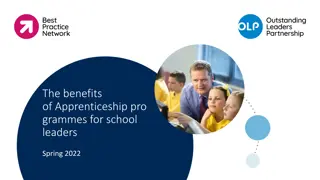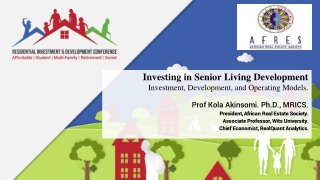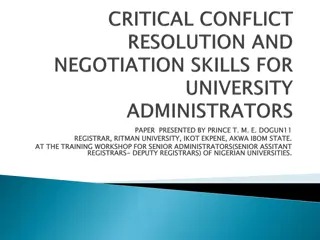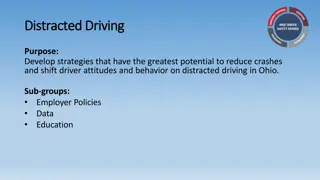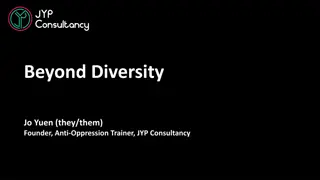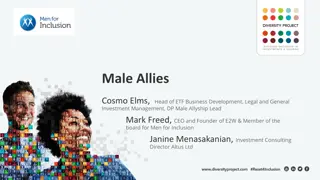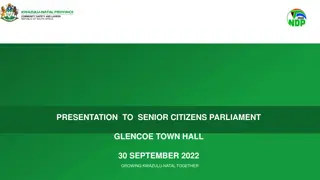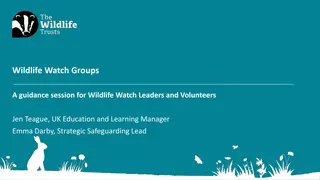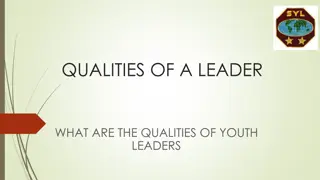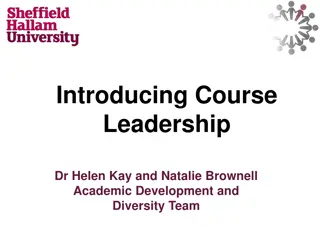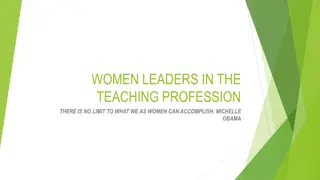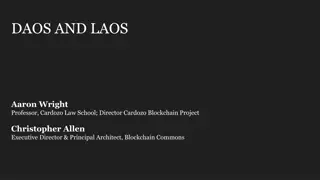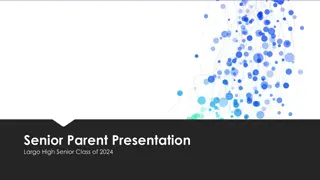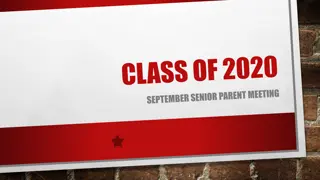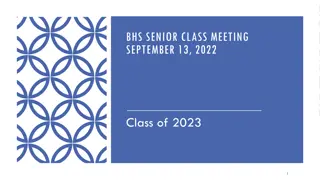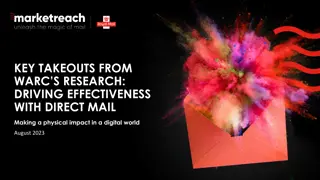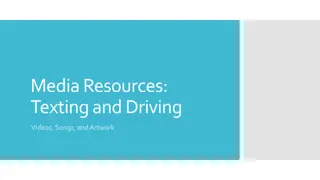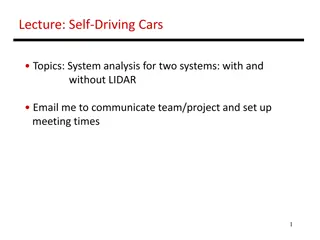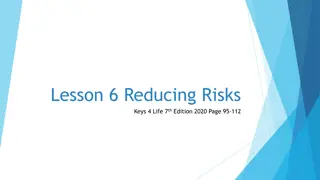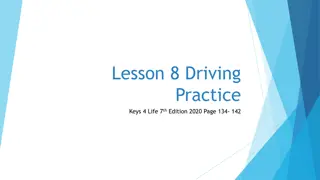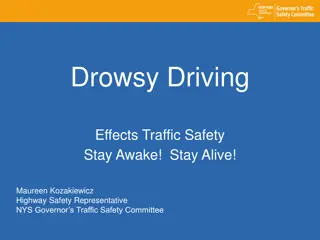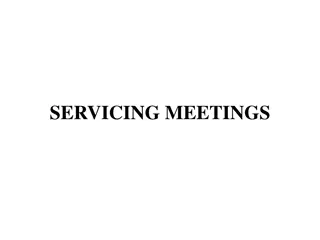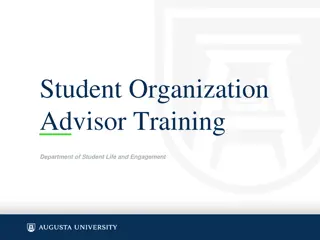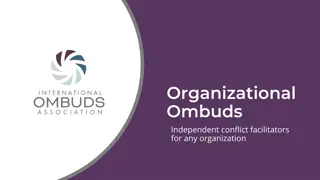Engaging Senior Leaders in Driving Allyship Within Organizations
This presentation focuses on the importance of allyship in leadership, providing aligned definitions, compelling data, and practical leadership behaviors to support inclusive environments in organizations. It emphasizes the shifting demographics and the need for businesses to adapt to changing employee and customer expectations. Leaders are encouraged to embrace vulnerability, introspection, and courage to drive allyship effectively.
Download Presentation

Please find below an Image/Link to download the presentation.
The content on the website is provided AS IS for your information and personal use only. It may not be sold, licensed, or shared on other websites without obtaining consent from the author. Download presentation by click this link. If you encounter any issues during the download, it is possible that the publisher has removed the file from their server.
E N D
Presentation Transcript
Engaging Senior Leaders Driving Allyship leadership within organizations
Allyship Presentation Content How to use this presentation Defining of Allyship Business case for leadership Changing national demographics Driving Allyship within your organization
About This Presentation This presentation provides you with aligned definitions, compelling data, and simple leadership behaviors that will assist you in incorporating Allyship programs within your organization s people strategy. By practicing allyship in the workplace, leaders and employees can effectively support an inclusive environment that consistently reduces the presence of bias, discrimination, and inequity in the workplace. 3
The Importance of Allyship Being an ally is a lifelong process of building relationships based on trust, consistency, and accountability with marginalized individuals and/or groups of people. It is not self- designated - your work and efforts must be recognized by those you are seeking to ally with. The United States is undergoing a profound demographic transformation in which people of color are quickly becoming the majority. By 2045, people of color will be the majority. This requires corporations to quickly adapt to changing employee and customer expectations. Failing to do so could put you and your business at a major competitive disadvantage. 4
Why does it Matter? The United States is undergoing a profound demographic transformation in which people of color are quickly becoming the majority. By 2045, people of color will be the majority. This requires corporations to quickly adapt to changing employee and customer expectations. Failing to do so could put you and your business at a major competitive disadvantage. The face of our customers and employees is changing. 5
Your role as a leader You play an influential role as a leader in your organization. This is even more true as you set the tone and model the behaviors of allyship. This work requires vulnerability, introspection, and courage but is well worth the time you invest in it. The accompanying training materials will help support you in how to do this. 6
Allyship Getting Personal WHAT IS YOUR ROLE AS A LEADER First, leaders should listen deeply to those around them. Create a designated time and place for people to voice their questions and experiences. Listen actively and ask follow-up questions to ensure you re exploring the root cause of problems, not just your responses to its most tangible aspects. The next step is to unite widely. Bring people together to achieve large-scale change. Try reminding people that we are more similar than we are different and focus teams on tangible goals in which everyone can participate. Finally, leaders should act boldly by using their voice and resources to influence people and practices at their organizations. 7
Setting a Roadmap for Inclusion WHY ALLSHIP FRAMEWORK IS IMPORTANT TO THE ORGANIZATION Allyship is ACTION to drive inclusion/diversity within the organization. Creating a roadmap to practicing allyship enables employees to funnel their desire to help into action. 92% of people already see themselves as allies in the workplace 29% say they speak up when they perceive bias, and 34% simply ignore it 8
Making your Allyship REAL. R E A L Reflect and understand your own experiences and blind spots Empathize and try to feel what others are feeling Act on behalf or in support of those you are allying for Leverage a learning mindset in your efforts to understand moments like these moving forward 9 Content provided by General Mills.
Appendix 10
Allyship is the link between Diversity & Inclusion The report from McKinsey & Company: Diversity Wins, How Inclusion Matters state their research found there are two elements in an effective diversity, equity and inclusion strategy: a systematic business-led approach to DE&I bold action on inclusion Allyship programs delivers on both key elements by providing organizations a strategy to both engage and include all employees simultaneously. This is key to ensure employees of all backgrounds and experiences are developing the empathy necessary for organizations to maximize the benefits of diversity. 12
Inform and Educate Yourself Allies should never rely on underrepresented or minority populations to educate their more privileged colleagues. Allies seek out and absorb research, literature, podcasts, etc. to inform themselves on historical events, news and perspectives that highlight the lived experiences of minorities. Allies should not impose or push their ideas or opinions in response. Rather, they should listen and learn. Leaders and Peers: Both leaders and peers can prioritize seeking out external, and taking advantage of internal, diversity forums, trainings and other events put on by the organization s D&I function and diverse ERGs throughout the organization. They can listen to and adopt the recommendations their ERGs make in terms of which sources of information to leverage to better understand the experiences and perspectives of underrepresented groups. What does this look like? ERG Leader: Our next panel discussion on systemic racism is Wednesday. Ally: Thanks! I ll be sure to add it to my calendar and read the article that was recommended ahead of time. 13
Interrupt Bias and Discrimination Allies should dynamically combat unfair behaviors, demanding accountability by monitoring and calling out biased discussions or decision making as they happen. Within more informal conversations, allies should vocally admonish any offensive comments, regardless of whether a member of the underrepresented group is present. What does this look like? Leader Example: During a Succession Planning Meeting Peer Example: During an Informal Conversation A leader, Devon: I noticed you just mentioned that she just seemed unprofessional to you and are saying she shouldn t receive the promotion. I d encourage you to focus on facts regarding the employee, rather than perceptions or opinions, which can be impacted by bias. Do you have any fact-based evidence as to why she shouldn t receive the promotion? A peer, Robin: At lunch, I heard you use a microaggression that is very offensive to indigenous people. Even though there was not an indigenous colleague around, I wanted to express that that was unacceptable. If you do not realize why that is offensive, I can help you understand. 14
Practice Active Listening Allies should proactively identify themselves as a confidant for members of underrepresented groups to safely express their feelings, concerns and needs. They should practice active listening by asking open-ended questions, confirming interpretations and understandings, affirming others experiences as valid and communicating empathy. They should not try to interject their own experiences or pressure anyone to share if they are not willing. What does this look like? Leader Example: One-on-One Meeting With a Direct Report Peer Example: Informal and Formal Conversations With Colleagues A peer, Kelly: I am someone you can come to if you want to talk about your thoughts, feelings or how you are impacted by what is going on in our communities, as well as your experiences here at work. A manager, Sharon: I want to take this opportunity to let you know I am willing to listen to, and attempt to understand, your experiences and needs and what I can do. You can feel safe in telling me about this without any concern about adverse impacts. 15
Advocate for Underrepresented Groups Allies should verbally uplift the work of peers and colleagues of underrepresented groups particularly in decision-making sessions or when leadership is present, where there is an opportunity to enhance that employee s professional standing at work. Allies should also do this during informal conversations, where they have the opportunity to enhance that person s professional character or reputation. On a larger scale, allies should use their voices to influence enterprise-wide change that directly benefits the experiences and careers of underrepresented employee groups. What does this look like? Peer Example: Following an ERG-Led Initiative Leader Example: In a Performance Calibration Discussion A peer, Eddie: I m glad our ERG is forming a petition to send to our CEO and head of recruiting, asking them to examine and improve our organization s diversity recruiting efforts at the executive leadership level. I will be sure to sign their petition and tell my colleagues about it as well. A leader, Sam: It s important to note Ann s performance this quarter went above and beyond the goals she set. She was responsible for leading multiple special projects outside of her day-to-day responsibilities and contributed greatly to the success of each due to her unique experiences and perspectives. 16
Commit to Awareness and Growth Allies should recognize allyship is a skill that, like any other, requires practice. While they are honing this skill, they will make mistakes and must be prepared to face constructive criticism. Allies should check their own thought processes, behaviors and actions on an ongoing basis to question how they may be contributing to formal and informal systems of structural inequality. They should not be defensive or accusatory when they are approached about wrongdoings. They should listen to members of underrepresented groups when they recommend ways, they can improve their allyship. What does this look like? Leader Example: During a Performance Appraisal Peer Example: Two Peers Conversation Following a Project Meeting A diverse employee, Sarah: During that meeting, I noticed you spoke over Alex (another diverse employee) when they were trying to make a recommendation for the project. I wanted to let you know that behavior likely made them feel as though their idea was not as valuable as yours a white, male. A manager, Sean: As I am reviewing all of my employees performance information, I should use my diversity training notes on the common types of bias to think about which of my personal biases may affect certain employees in underrepresented talent segments and to avoid unfair decisions. An ally, John: Thank you for bringing this up with me. I hadn t realized I had done that and don t want to make Alex, or any other team members, feel that way. Going forward, I will take time and be more aware of others speaking time. 17
Call to Action (align to each company action plan) LEADERS NEED A GO DO As a result of our We will LISTEN, We will LEARN, We will ACT campaign, @nVent each executive has a Diversity Action Plan. The goals are quantitative and qualitative designed to impact inclusive behavior. Examples include: Candidate slates must be diverse Implementing diverse interview panels Participation in ERG events Mandatory diversity training Development ops for hi-po diverse talent Leading meetings 1:1 coffee chats with more senior leaders Mentoring for diverse talent Incorporating a diversity topic at every team meeting We also have a People/Culture Scorecard that is tied to Management Incentive Plans Improving Inclusion Index scores of EE Survey Increasing employee engagement ERG membership Increasing our diversity metrics at the exempt level Increasing global representation of women Increase diverse slates 18
References Be a Better Ally, Harvard Business Review. Nov/Dec 2020. https://hbr.org/2020/11/be-a-better-ally Ideas on TED talk importance of allyship Want a More Just World, Be an Unlikely Ally | Nita Mosby Tyler https://urldefense.com/v3/__https://www.ted.com/talks/nita_mosby_tyler_want_a_more_just_world_be_an_unlikely_al ly__;!!NFcUtLLUcw!EeWoKt0EqRNi0S2kzYdQ0RgvV4RyvyF6MHDfNhqAszIc1NfaatgTll3uVvxlATi00lCLa_DeUg$ Service, Allyship, and a Global Perspective | Whitney Parnell https://urldefense.com/v3/__https://www.youtube.com/watch?v=o0smGrTa4xM__;!!NFcUtLLUcw!EeWoKt0EqRNi0S2 kzYdQ0RgvV4RyvyF6MHDfNhqAszIc1NfaatgTll3uVvxlATi00lDd-HKz4g$ Effective Allyship: A Transgender Take on Intersectionality | Ashlee Marie Preston | TEDxPasadena https://urldefense.com/v3/__https://www.youtube.com/watch?v=3EcuDfDjUd8__;!!NFcUtLLUcw!EeWoKt0EqRNi0S2k zYdQ0RgvV4RyvyF6MHDfNhqAszIc1NfaatgTll3uVvxlATi00lAqGYvLjQ$ Screaming in the Silence: How to be an ally, not a savior | Graciela Mohamedi | TEDxBeaconStreet https://urldefense.com/v3/__https://www.youtube.com/watch?v=d2qAbp- t_FY__;!!NFcUtLLUcw!EeWoKt0EqRNi0S2kzYdQ0RgvV4RyvyF6MHDfNhqAszIc1NfaatgTll3uVvxlATi00lCE-CF62Q 19
